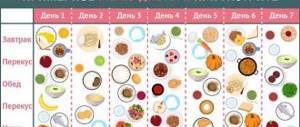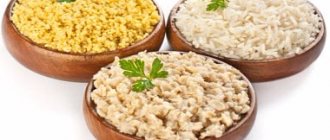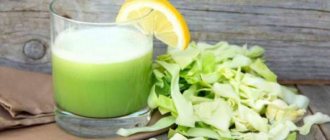Useful properties of kefir
Fermented milk products are a storehouse of nutrients. Kefir, for example, contains more than twenty types of microorganisms that have a beneficial effect on the gastrointestinal tract. Among the beneficial properties of the drink obtained by fermenting whole or skim milk are:
- normalization of gastric or intestinal microflora;
- strengthening general and local immunity;
- restoration of metabolism;
- improvement of vascular tone;
- lowering blood sugar levels, preventing diabetes;
- influence on growth and proper formation of the skeleton in children.
The effect of kefir on the gastric mucosa
If kefir is certainly beneficial for a healthy stomach, then with gastritis the drink can have different effects on the inflamed mucous membrane. Its effect on the body depends not only on the properties of kefir itself, but also on the form of the disease.
With increased acidity
Gastritis with high acidity is accompanied by the secretion of large amounts of hydrochloric acid by the parietal cells, which further irritates the gastric mucosa and increases its inflammation.
Despite all the beneficial properties of fermented milk products, consuming them in this form of the disease is contraindicated. The fact is that they are capable of activating fermentation processes in the stomach, and the lactic acid contained in kefir can irritate the already damaged walls of the stomach.
Outside of an exacerbation, when the patient feels satisfactorily and is not bothered by the symptoms of the disease, eating cheesecakes, casseroles and dumplings prepared on the basis of fermented milk products is not prohibited. It is also useful to drink homemade one-day kefir and fermented baked milk: for gastritis with high acidity, they are well absorbed and do not cause an increase in acidity.
With low acidity
With gastritis of the stomach with low acidity (atrophic gastritis), on the contrary, there is a lack of functioning of the parietal cells, and the pH of the gastric juice shifts to the alkaline side. This form of the disease is an indication for daily consumption of fermented milk products, including kefir. The acids it contains lower the pH of the stomach and help digest food. The drink also has bactericidal properties and prevents the proliferation of pathogenic microbes in the stomach.
During exacerbation of atrophic gastritis, the consumption of the drink should be limited (during this period, the most gentle nutrition is required). With a decrease in painful symptoms, fresh kefir of medium fat content (up to 2.5%) can be drunk every day, half a glass 30 minutes before meals. You can add a spoonful of honey to the drink: this will enhance the healing effect and improve the taste.
For erosive gastritis
For erosive gastritis and gastric ulcers in the acute stage, kefir and any other fermented milk drinks are excluded. Outside of an exacerbation, it is recommended to use one-day kefir, which contains a large amount of beneficial microflora and does not irritate the gastric mucosa.
Kefir for stomach ulcers: benefits, recipes for making at home
The prevalence of gastric ulcer among the adult population reaches 15%. The disease is chronic, with periodic exacerbations. An important part of the treatment of peptic ulcer disease is diet therapy. Compliance with the diet allows you to prolong the state of remission and prevent the development of complications.
Fermented milk products, in particular kefir, are very beneficial for the body. Being an important source of calcium and complete, easily digestible protein, they are indispensable in the diet.
However, the presence of acid in them, formed during milk fermentation, can adversely affect the course of the disease.
Is kefir allowed for stomach ulcers, as well as its benefits, types and homemade recipes, read on.
Composition and features of kefir
Kefir is a fermented milk drink obtained by fermenting whole milk with a special starter. The exact origin of kefir grains is unknown.
It contains streptococci, lactic acid bacteria, acetic acid bacteria and yeast, about 22 different species in total.
Microorganisms are in a state of symbiosis (coexistence) and full-fledged operation of kefir starter is possible only if all its components are present.
The product contains:
- squirrels – 3%;
- fats – from 1% to 3.5%;
- carbohydrates – 3–4%;
- ethanol – 0,2–0,6%;
- vitamins B, E, A, K, D;
- microelements – potassium, calcium, magnesium, phosphorus.
Bacteria and yeast determine the taste of a fermented milk drink, its specific smell and nutritional value. As a result of their vital activity, milk changes its chemical composition.
Yeast cultures cause alcoholic fermentation, converting lactose (milk sugar) into carbon dioxide and ethyl alcohol.
Under the influence of lactic acid bacilli and streptococci, carbohydrates are converted into lactate (lactic acid).
Making kefir at home: recipes
A healthy fermented milk drink can be prepared at home. Unlike an industrially produced product, it will not contain preservatives, in addition, the number of beneficial microorganisms in it is much higher.
When making a drink at home, you must adhere to several basic rules:
- Use only clean dishes. All containers must be thoroughly washed and scalded with boiling water. This is necessary to prevent the development of pathogenic microflora.
- It is important to strictly maintain the optimal cooking temperature specified in the recipe. Failure to comply with the temperature regime leads to an imbalance in the functioning of the starter and the appearance of characteristic viscousness.
Making kefir using dry starter
Ready-made dry starter cultures for home use are available for sale - Narine, Vivo, Evitalia. To prepare a drink with their help, whole milk must be preheated to 100 0C and then cooled to 40–45 0C.
Add starter to the container with milk in the amount recommended by the manufacturer. Then put the jar in a warm place (you can use a thermos to maintain a constant temperature) for 12–20 hours. A sign that kefir is ready is the appearance of flakes and clots.
The finished product must be stored in the refrigerator.
Homemade kefir made using store-bought product
You can use store-bought kefir as a starter. To do this, pour the milk, previously boiled and cooled to 40–50 0C, into a glass container. Add store-bought kefir in a ratio of 3 tablespoons per 1 liter of milk, mix well.
Then put the jar in a warm place (you can use a thermos or yogurt maker) for 10–12 hours. After which we put the container in the refrigerator for 2–4 hours to complete the fermentation process. It is better not to use the resulting product to ferment a new portion.
It is advisable to prepare a new portion.
Advice from a gastroenterologist
Fermented milk products can be used with virtually no restrictions in the dietary nutrition of patients with diseases of the stomach and duodenum in remission with low or normal stomach acidity.
When buying kefir in a store, choose a product with a minimum shelf life - this guarantees that it does not contain preservative additives. The best option for gastritis and stomach ulcers is kefir, prepared at home using dry starter cultures.
Source: https://GastrituNet.online/bolezni-zheludka/yazvennaya-bolezn/lech/pitanie/kefir-pri-yazve-zheludka.html
General rules for using kefir for patients with gastritis
Which kefir is the healthiest for the stomach? How much can you drink for gastritis? Can the drink be harmful? In order for a fermented milk product to help you fight the disease, it is important to follow simple rules:
- Choose only a natural product from a manufacturer you trust. A fermented milk drink of dubious quality has nothing in common with kefir, and most likely does not contain any useful components.
- The shorter the shelf life, the better. A one-day drink is considered the best, as it contains a maximum of beneficial microflora and a minimum of lactic acid. All patients with chronic gastritis are recommended to drink fermented milk drink no older than three days from the date of production.
- Drink kefir at room temperature. A drink straight from the refrigerator irritates the stomach lining and can cause an exacerbation.
- Drink kefir whenever you want. You can drink the drink throughout the day. It is especially useful to use it in the morning, on an empty stomach and half an hour before meals. An evening glass of kefir will allow you to sleep more soundly and will promote better absorption of calcium (which, as is known, is actively absorbed by bone tissue at night). Please note that the drink has a slight diuretic effect, so it is better to drink it 2-3 hours before bedtime, and not while already in bed.
- Optimal fat content is 2-3%. A medium-fat drink has better enveloping properties compared to a diet drink.
- Limit yourself to one glass. In large quantities, kefir, especially that which is more than three days old, can cause diarrhea. Therefore, it is enough to drink 250 ml of the drink during the day (can be divided into several doses). If the problem of loose stool has not passed you by, give up fermented milk products for a while.
- Outside of exacerbation of gastritis, you can add various ingredients to the drink - berries, fruits, syrups, etc. Honey can only be eaten if the acidity of the gastric juice is low.
Features of the disease
Gastritis is a common stomach disease that causes irritation and inflammation of the stomach lining. Every second inhabitant of the Earth suffers from it. The most common causes of gastritis are poor and irregular diet, bad habits and stress.
It is customary to distinguish the following types of gastritis:
- Acute , occurring for the first time due to exposure to strong irritants (eg: medications, alcohol, fatty foods, acids and alkalis, etc.).
- Chronic gastritis occurs constantly and sometimes asymptomatically. Periods of exacerbation are followed by periods of remission. In the chronic course of the disease, constant adherence to the diet and exclusion from the diet of foods that can cause an attack of gastritis are required.
The diet for gastritis of the stomach is prescribed depending on the acidity:
- With increased acidity, heartburn, pain in the right hypochondrium, diarrhea, and an iron taste in the mouth appear. Severe pain occurs between meals.
- With low acidity, heaviness in the abdomen, constipation, and increased gas formation are observed.
Is it possible to have sour milk for gastritis?
One of the necessary rules in the treatment of gastritis is strict adherence to a special diet, which will vary depending on the acidity of the stomach.
An important product in any diet is kefir and other fermented milk. Kefir is absorbed faster by the stomach than milk or other dairy products. It speeds up intestinal function, saturating the body with beneficial bacteria. But is it good to drink kefir for gastritis?
For gastritis with low acidity, you can drink milk and kefir, but you should choose a low-fat natural drink.
It is recommended to use an infused three-day fermented milk product with a low fat content. Kefir, which has been brewed for several days, is useful for gastritis accompanied by diarrhea. It will have a fixing effect. One-day kefir, on the contrary, will give a laxative effect.
For patients with chronic form, it will be useful to adhere to a buckwheat-kefir diet once a month for several days. Buckwheat with kefir will have a healing effect for gastritis with low acidity. Two products rich in vitamins and microelements will cleanse the body of harmful substances, toxins and cholesterol.
Patients with high acidity should approach the use of kefir with caution. For them, a healthy drink can be dangerous.
Dairy products
Fermented milk products must be included in the diet for peptic ulcers. The recommendation is explained by the presence of a large amount of necessary acids that do not irritate the walls of the stomach.
By stimulating the digestive glands, fermented milk products do not increase weak secretion. This makes it easier to digest food, and the internal organs do not work too hard.
Kefir is considered a healthy popular drink. Drinking a glass of kefir at night means replenishing your daily supply of phosphorus and calcium. Kefir is easier and faster to digest than fresh milk. For stomach ulcers, kefir is recommended for consumption not cold, one day from the date of manufacture, in small quantities.
Yogurt is a fermented milk product prepared using starter culture. Yogurt is eaten or drunk. It is better to choose fresh and unsweetened. Yogurt targets the bacteria that causes stomach ulcers.
Ryazhenka is a drink consumed for diseases of the gastrointestinal tract without restrictions. If kefir for stomach ulcers is drunk exclusively during periods of remission, then fermented baked milk is not a dairy product that worsens the condition. Due to its mild sour taste, the drink has a beneficial effect on maintaining the balance of intestinal flora.
Low-fat varieties of cheese are included in the list of permitted products for gastrointestinal diseases. Cheese for stomach ulcers is considered a unique food in terms of protein content. While maintaining the quality of rapid absorption, cheese replenishes the body's protein requirements. However, the product is added to the diet after signs of exacerbations are removed.
Low-fat cottage cheese is the main item on the diet menu. Saturated with vitamins and microelements, fermented milk product is used fresh and cooked. You can eat cottage cheese by mixing it with low-fat sour cream, sugar or honey. The product is used for baking casseroles, cheesecakes, and soufflés.
It is worth noting that it is strictly forbidden to consume curd cheese or curd masses - too much fat and sugar make sweets unsuitable for stomach diseases.
Useful properties of kefir for the gastrointestinal tract
Kefir is useful not only for those suffering from diseases of the digestive system. To improve the functioning of the whole body, it is recommended to drink it for both children and adults.
It is perfect for a light snack and is indispensable in medical and dietary nutrition. Its benefits are due to the high content of vitamins A, B, D; microelements important for the body: calcium, phosphorus and potassium.
Kefir is beneficial for the gastrointestinal tract due to its high content of lactobacilli and prebiotics, which have a strengthening effect on the entire system as a whole . Kefir accelerates metabolic processes, eliminates the processes of fermentation and putrefaction in the stomach, in some cases speeds up metabolism, in others it has a fixing effect.
Butter
For those suffering from peptic ulcers, butter is a necessary and healthy product. This is a source of provitamin A, which ensures the proper functioning of the immune system, stimulates the healing of wounds and ulcers on the mucous membrane of the stomach and duodenum. Vitamin P ensures normal metabolism in tissues and blocks the effects of stress factors on the body.
Is it possible to use butter if you have a stomach ulcer and what kind should the patient choose? Nutritionists allow the use of only real butter made from dairy cream without adding salt or flavorings.
The fat content of this creamy product is at least 82.5%. All other varieties with low fat content cannot be classified in this category. In addition, to stabilize and improve the taste, a plant base is added to the dairy product, which makes the product dangerous for a sick person.
The norm for butter consumption is 25 g per day. It can be used as an additive to prepared dishes and as a spread for sandwiches.
Dairy products are indispensable for a person with a stomach ulcer at all stages of the disease and are a source of the most valuable elements for the body.
Kefir for gastritis with high acidity
Due to the high acidity level of kefir, it is not recommended to drink it during exacerbation of gastritis. The patient needs gentle nutrition that will not irritate the inflamed gastric mucosa. This also applies to patients with high acidity during an exacerbation.
The drink has the property of activating the fermentation process. The lactic acid contained in the drink can irritate the walls of a sore stomach, causing pain. But cheesecakes, dumplings and casseroles made with kefir are not prohibited.
When the period of exacerbation has passed, you can include kefir and cottage cheese, milk and milk porridges without adding butter into your diet.
Homemade fermented milk products
The best solution when switching to fermented milk products is to prepare them yourself. It becomes possible to control the quality and composition of the product. The process does not take much time and does not require special skills.
Usually it is enough to have on hand enamel dishes without coating defects, a sieve and a clean gauze cloth. A little effort and patience will lead to a result that will please the person with an ulcer and healthy family members.
To make homemade kefir you will need a liter of milk and two tablespoons of starter. The milk should be boiled and cooled. For the first time, it is allowed to use store-bought kefir or yogurt as a starter.
The ingredients are mixed in a clean enamel bowl. The mixture should stand in a warm place for at least four hours. Freshly prepared kefir is consumed within 24 hours. The remainder is used for sourdough.
Cottage cheese for stomach ulcers should remain low-fat and fresh. Preparation takes a day. Take low-fat milk as the main ingredient and add starter culture. Three to four tablespoons of starter are required per liter. Then the mixture is covered and left in a warm place for 12-18 hours.
Heat treatment begins when the liquid turns into a kind of milky jelly. The substrate is cut into squares with a knife. Cook in a water bath until boiling. Immediately remove from heat. Place the mixture in cheesecloth and strain off the yogurt. The finished cottage cheese can be eaten immediately or frozen. Curdled milk is used for kneading dough.
A diet for people with stomach pathologies is a necessary condition for maintaining health. Cottage cheese, yogurt, kefir for ulcers make up a significant part of the patient’s diet, allowing you to create an individual menu taking into account taste preferences.
What kind, how and how much kefir to drink?
Regular consumption of kefir benefits the entire body. If gastritis is likely to occur, it is recommended to drink it for preventive purposes. But you need to choose and use kefir wisely in order to get the maximum benefit from it. An acidic drink can upset the delicate balance of the stomach.
- Choose only natural products that are fermented with kefir mushrooms. A cheap analogue, kefir drink, does not contain a large amount of useful microelements and has dubious benefits.
- The shorter the production time of kefir, the more nutrients it contains . By the end of the shelf life, their percentage becomes minimal. Therefore, the best option is to use one-day or three-day kefir.
- You should only drink the drink at room temperature . This rule applies not only to those suffering from gastritis, but also to those who are not familiar with this disease. Cold irritates the lining of the stomach.
- You can consume kefir at any time of the day. It is better to do this on an empty stomach or before meals. Kefir should be drunk at night several hours before bedtime; it has a diuretic effect. The drink will improve sleep and improve the microflora of the stomach. Taking fermented milk at night is also important because it is at night that calcium (which kefir is rich in) is better absorbed by the body.
- Full-fat kefir has enveloping properties ; you need to choose a drink with a fat content of 2 to 3%, it contains the maximum benefits.
- Kefir can cause diarrhea , so it is not recommended to drink it in large quantities; one glass before meals is enough. If the problem persists, then you should give up the drink for a while.
- You can add a variety of ingredients to kefir: berries, syrups and jam . If the acidity is low, you can add a spoonful of honey.
Prevention of gastritis
When our stomach malfunctions due to irregular nutrition, stress and bad habits, we begin to think about what we eat. Gastritis threatens both children and adults.
To avoid stomach problems, it is important to adhere to a nutritional culture that consists of:
- correct diet . Regularly eating at the same time adjusts the body to a certain rhythm. Gastric juice begins to be produced at the right time, this improves digestion;
- choosing quality products . They should be fresh and healthy. You can pamper yourself with spicy, fried, smoked foods and other not very healthy excesses, but do it thoughtfully and in moderation. Eat more vegetables and fruits; • alternating second and first courses . Dry snacks should be avoided;
- giving up alcohol and smoking . Low-quality alcohol can severely “burn” the gastric mucosa, and tobacco smoke will increase inflammation;
When taking medications for a long time, you should introduce as many dairy products as possible into your diet, including kefir.
Inflammation of the stomach occurs as a result of poor nutrition, poor environment, constant stress, or infection with the bacterium Helicobacter pylori. Many patients are concerned about the use of kefir for gastritis, because this drink is not aggressive to the mucous membrane, but can aggravate the unpleasant symptoms of the disease. Let's try to understand its benefits and harms for inflammation of the stomach.
The lactic acid drink is rich in bifidobacteria, which improve intestinal microflora and help improve the condition of the gastrointestinal tract. There is an opinion that kefir helps get rid of gastritis, but in combination with medications. Is this true, and what do qualified specialists think about this issue?
Other dairy products for ulcers
People with gastrointestinal pathologies often wonder whether it is possible to eat sour cream if they have a stomach ulcer. This directly depends on the contents of the product. Sour cream is a fermented milk product that spoils quickly. The patient can add it to first courses, make various sauce dressings and desserts. During the diet, doctors recommend using 10 and 15% sour cream. A high percentage of fat content can harm the stomach.
Another approved product during diet therapy is yogurt. It is obtained by fermenting milk with special components. Yogurt helps fight the bacteria Helicobacter pylori for stomach ulcers. Doctors say that this dairy product reduces its development and helps to completely eliminate the infection. To get this effect, yogurt must be live and contain:
- milk streptococci;
- Bulgarian stick;
- probiotics.
The patient should give preference to low-fat berry-type yoghurts with little or no sugar content.
Butter occupies an important place in the list of permitted foods. This is the only product that is of animal origin and is part of the diet. The product is quietly absorbed in the body due to the fractional structure of the fat concentrate. Doctors allow fresh oil to be included in first courses, cereals and sauces for stomach ulcers. During treatment at high temperatures, the product loses its beneficial properties and can aggravate the patient’s condition.
For example, the daily amount of kilocalories should not be less than three thousand. To recover, it is necessary to replenish the body's energy reserves. The serving size during a break between meals of no more than three hours should be two palms folded together. You should eat foods that are steamed or stewed in a small amount of water.
During the recovery phase, the zigzag principle is used. Temporarily the patient returns to the regular menu. Then he starts dieting again. During a break from dietary nutrition, foods that irritate the stomach should be avoided.
A stomach ulcer is an insidious condition. The slightest step away from the prescribed menu will trigger a series of attacks. To avoid this, it is important to adhere to the principles of maintenance nutrition. One of the requirements is an individual approach when identifying possible deviations from a strict diet. The course of the disease, progress in treatment, and the patient’s digestive characteristics are taken into account.
Benefits of the drink
Kefir is a product unique in its composition. For its production, cow's milk and a special fungal starter are used, which is responsible for the microorganisms inhabiting it. In general, the milk drink consists of 20 types of beneficial fungi and bacteria that have a beneficial effect on the internal microflora.
It has the following beneficial properties:
- normalizes metabolism;
- increases immunity;
- has a mild diuretic property;
- antiseptic.
The drink has a positive effect on the health of the intestines and stomach, since it contains the following microelements:
- vitamins of groups A, B, C, H;
- iron, iodine, fluorine and manganese;
- phosphorus, calcium, potassium.
General rules of use
It's no secret that almost all gastrointestinal diseases are treated with diet. Light, small meals will speed up the healing process and relieve unpleasant symptoms. Is it possible or not to include kefir in the list of healthy products? Gastroenterologists claim the healing properties of the drink, placing virtually no restrictions on the volume consumed.
Gastritis is fraught with the danger of digestive disorders, which causes dysbiosis, flatulence and other unpleasant phenomena. The chronic form of the disease is characterized by a decrease in the body's protective barrier and the appearance of weakness. Beneficial bifidobacteria will tidy up the intestines and also kill pathogens.
- If you suffer from constipation due to a peptic ulcer, doctors recommend drinking kefir daily. It will quickly and gently cleanse the body of accumulated toxins. Due to its rapid absorption, the lactic acid drink will not cause you heaviness and pain after consumption. Along with it, you can eat soups, light salads, boiled meat and herbal teas.
- Remember that a one-day drink can be drunk only in the absence of an intestinal disorder, so as not to provoke an attack of diarrhea.
- People with low acidity of gastric juice should pay attention to three-day kefir. It eliminates pain and reduces inflammation. In other cases, it is best to drink a fresh product. Do not forget also that the concentration of ethyl alcohol depends on the maturity of the product.
- For diseases of the stomach and intestines, kefir should be chosen that is low-fat and non-acidic. Different levels of fat content and acidity are determined by the degree of lactic acid fermentation. If you choose your ideal drink incorrectly, heartburn may occur as a result of an imbalance. The best option for patients with high acidity and ulcers is one-day kefir with a fat content of 2.5%. This product reduces inflammatory symptoms.
- The average daily intake of the product is 200-400 ml. But this takes into account the fact that the gastroenterologist did not identify any contraindications.
Kefir and forms of gastritis
Fermented milk drinks are not included in the prohibited list. Below we will consider whether kefir is indicated for gastritis with high acidity and duodenal ulcer:
- If you have high acidity, then consuming kefir will only worsen your condition. This is due to the fact that the product activates the fermentation process, which in turn irritates the gastric mucosa. This will complicate the patient’s condition, adding pain, nausea and even vomiting. Can't imagine your life without kefir? Try diluting it with water to reduce the acid percentage.
- If gastritis is accompanied by low stomach acidity, then the drink is recommended by gastroenterologists with virtually no restrictions. It is best to drink kefir before bed. A natural product is recommended for consumption (ideally if it is prepared at home).
- The chronic form of gastritis involves daily consumption of kefir. If you don't like its pure taste, then add berries, pieces of fruit or a handful of finely chopped nuts. This can be done outside of periods of exacerbation.
- If you have erosive gastritis, drinking a lactic acid drink is strictly prohibited. It irritates the mucous membrane and provokes vomiting. When the disease begins to decline, it is allowed to consume daily kefir, which has a minimal percentage of fat content.
- Is it possible to drink kefir if you have atrophic gastritis? Yes, but only if you follow a special diet. It is noteworthy that the drink is permitted even during an exacerbation. Contact your doctor to give you his nutritional advice.
Treatment option
Take this recipe, which is perfect for the prevention of gastrointestinal diseases:
- 1 glass of low-fat kefir;
- 1 tsp. unrefined oil.
Mix all ingredients and consume the mixture before bed. The course of such treatment is a week. The medicine is especially effective if you have an ulcerative form of the disease.
Dairy products are a storehouse of microelements, vitamins and minerals
Dairy products for stomach ulcers take first place in terms of health and health benefits. In ancient times, milk was used to treat diseases associated with imbalances in the body. Being a storehouse of useful substances, this amazing drink produced by animals is used to restore vitality and improve tone. In Asian countries, salt or honey is added to milk to enhance healing powers.
The taste qualities of dairy products in combination with healthy ones allow us to consider milk a drink, the consumption of which is beneficial from birth to old age. Of course, the individual characteristics of human digestion are a decisive factor. Milk contains a unique natural complex, including hundreds of useful substances. In addition to proteins, fats and carbohydrates, there are minerals, vitamins, organic acids and enzymes.
Gastroenterologists necessarily include cow's milk in the diet menu for gastric or duodenal ulcers and gastritis. Recommendations focus on the low fat content of the drink. By covering the stomach walls with a protective film, the drink accelerates the healing of damage.
Drinking milk if you have a stomach ulcer is equivalent to taking painkillers. In medical practice, there is a decrease in pain after taking low-fat milk. It has been proven that 400 milliliters of a natural drink per day satisfies a person’s daily need for fats by a quarter, proteins by a third, potassium by half, calcium and phosphorus by three quarters.
It rivals goat's milk in terms of nutritional value. The product is especially suitable for use by weak children and those with food allergies. Goat's milk for stomach ulcers is recommended to weaken the effects of aggressive factors in the gastric environment.
Goat drink is considered fatty. It is necessary to dilute goat milk with water to reduce the fat content. A distinctive feature is the excellent digestibility of the drink without the participation of bile.
Camel milk is widely used in Asian countries to restore the health of people who have suffered from illnesses. Fresh camel milk is used as an adjuvant in the treatment of diabetes; it contains easily digestible insulin.
Shubat is an approved dairy product for stomach ulcers and gastritis. It is allowed to be consumed daily in small portions, diluted by half with water.
Saumal - fresh mare's milk. The highest value of the drink is maintained during the first five hours. In summer and spring, people with peptic ulcers and liver diseases are strongly recommended to drink saumal to increase the body's immune strength.
Kumis is a product made from horse milk. Like shubat, it contains fermented milk enzymes. The beneficial properties of kumiss are beyond doubt. Out of habit, kumys sometimes causes unpleasant taste sensations.
Kefir and ulcer
Kefir is allowed for use for stomach and duodenal ulcers. Preference should be given to a non-acidic product. How to take a drink when you are sick?
- An exacerbation of a duodenal ulcer is accompanied by pain, severe weakness, and nausea. This is why doctors recommend refraining from drinking kefir in the first 5-10 days of an acute condition. After the specified time, you can introduce the drink into your diet.
- A prerequisite is 0.05% fat and not too sour. Do not forget also about the prescribed diet, which will help a speedy recovery.
- It is better for patients with ulcers to drink kefir at room temperature so as not to provoke stomach pain.
- During the period of remission, you can increase the daily dosage, gradually moving away from it. The fermented milk product is recommended as an independent dish for a snack or breakfast. This promotes its better absorption.
Milk for ulcers
Milk for stomach ulcers is the main ingredient that should be taken during a therapeutic diet. A natural drink can:
- improve digestion;
- does not provoke high secretion;
- relieves pain;
- accelerates the healing process;
- saturate the body with the necessary beneficial components.
Nutritionists advise people with gastrointestinal problems to prepare milk soups from cereals, pasta, vegetables, cereals, make cottage cheese soufflés and casseroles. You can also make sour cream sauces. The main thing is that all fermented milk products are not fatty and do not burden the stomach.
Doctors allow the introduction of pasteurized low-fat milk from camels, cows, and goats into the therapeutic diet. For stomach ulcers, it is better to dilute goat's milk with water 50:50, as it is highly concentrated and fatty. However, even such a light product will contain many useful elements and vitamins. The natural drink also contains substances that enhance immunity, hormones and enzymes.
Dairy products are rich in the following beneficial elements:
Thanks to these elements, a healthy person replenishes his reserves of useful substances, and in case of gastrointestinal disorders, treatment with milk helps doubly. The patient is allowed to use it in different forms.
Goat, cow or camel milk can treat stomach ulcers due to its high digestibility. This effect is achieved due to the temperature of milk fat, which is only one degree lower than human temperature. The amount of useful elements also depends on the percentage of fat content.
One glass of milk drunk during an acute form of pathology can replenish the norm of vitamins that the body should receive per day. Due to linolenic acid, milk quickly destroys infections and is a preventative against the appearance of tumors. Has enveloping properties.
If you take dairy products in excess, you can provoke some complications:
- indigestion;
- a large dose can excrete calcium in the urine;
- Cow and goat products slowly affect bone structure.
How to drink
We have already found out that if you have gastritis, you can treat yourself to kefir. Here’s how to drink the product correctly so that it not only brings benefits, but also does not cause harm:
- For gastritis and ulcers, it is recommended to eat foods at room temperature so as not to burn the mucous membrane or overcool it. When heated in the microwave, kefir loses its healing properties, since bifidobacteria die already at a temperature of 40 degrees.
- Gastritis and duodenal ulcers should be treated with kefir in compliance with the conditions of administration. The fermented milk drink is drunk after meals and a couple of hours before a night's rest. If you are used to starting your morning with a healthy drink, then refrain from eating for at least half an hour after that.
- You can drink kefir for stomach ulcers about 6 times a day during the entire medication course.
- Fermented milk products are especially useful for low acidity. During the period of remission of diseases, you can prepare a very tasty treat by mixing berries with kefir and half a teaspoon of honey in a blender.
- A healthy breakfast for gastritis with atrophic form or high acidity is also possible. In the evening, pour buckwheat with non-acidic kefir in a ratio of 0.5:1.5 cups. Overnight, the drink will combine the microelements of buckwheat and bifidobacteria of the dairy product. The next morning you can safely drink a vitamin cocktail. By the way, cereal contains vitamin PP, which inhibits pathogenic microflora.
Cottage cheese for ulcers
Cottage cheese for stomach ulcers must be on the patient’s daily menu. This is the only dairy product on the use of which doctors do not place any special restrictions. Cottage cheese contains a lot of calcium, vitamins, and iron.
If a patient consumes unpasteurized cottage cheese during illness, then it must be heat treated. This dairy product can be prepared at home. And pasteurized cottage cheese can be given to the patient with fruits, in the form of curd mass, mousses, puddings and other desserts.
Contraindications
Despite the fact that dairy products are classified as the healthiest in the world, they are not suitable for all people. There are the following contraindications:
- allergy to milk protein;
- individual intolerance;
- dyspepsia - a disorder of the digestive system;
- frequent discomfort in the intestinal area;
- peptic ulcer, accompanied by increased acidity during an exacerbation.
The purpose of using kefir to treat gastrointestinal diseases is to prevent inflammation and eliminate ulcers. Proper diet, medications and a healthy lifestyle will help you heal the disease as quickly as possible.











